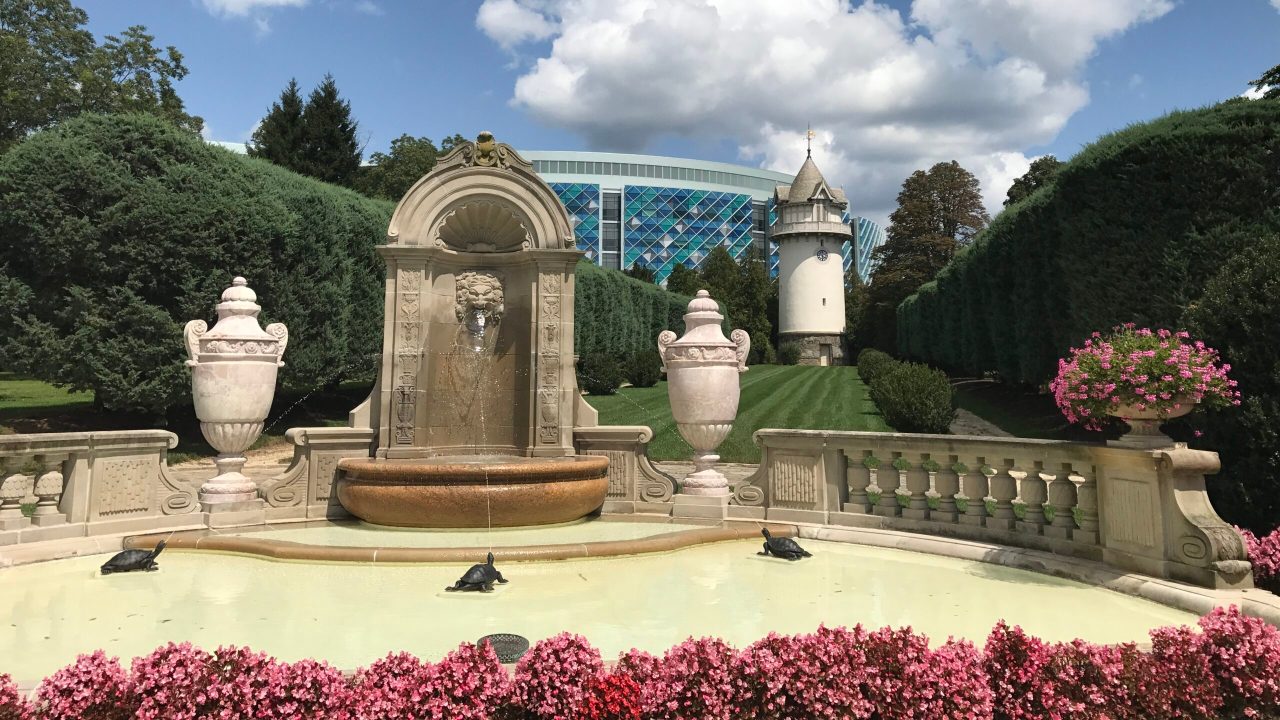
Personal stories are how we, at Nemours Estate, connect our visitors with the duPont family who once lived in this grand place. So I’d like to share my personal story of building a museum education program from the ground up, to illustrate why I have felt the need to create not just another education department, but a new model altogether focused on weaving health and heritage together.
After studying and working throughout Delaware for years—focusing on early childhood education research, psychology, history, and museum volunteering—I moved to London with my husband in 2015 to earn my master’s degree and make the career jump into the museum field. London (as many already know) can make any museum professional feel like a kid in a candy shop. I was lucky enough to work for two of its excellent institutions: the Charles Dickens Museum, as a volunteer docent, and The Geffrye Museum of the Home, in the Learning & Curatorial department.
It was the Geffrye Museum which opened my eyes to how a museum can function in practice as a well-integrated community asset. Hoxton, the Geffrye’s neighborhood, was severely lacking in green space and embroiled in a tense tug-of-war over gentrification. The museum responded by providing free half-term educational activities for children, engaging youth in programming, and leading regular neighborhood programs for people in the community who were blind, deaf, lonely, older, and had learning disabilities. The museum was a facilitator of community conversations and also welcomed neighbors to picnic on its front lawn or explore the historic gardens, free of charge. (If you’re not already familiar with it, please check out The Geffrye Museum here.) This greatly inspired the next phase of my career.
Nemours Estate & The Nemours/Alfred I. duPont Hospital for Children
Formerly known as Nemours Mansion and Gardens, Nemours Estate was once hidden to most of the general public, including the children’s hospital on its campus. It had been the home of Alfred I. duPont and his family, who lived at Nemours for sixty years, from 1910 until 1970. Upon his death, Mr. duPont left his fortune to establish the Nemours Foundation, which would build a pediatric hospital and eventually evolve into a broader healthcare system. Decades later, everyone in Delaware knew about Nemours/Alfred I. DuPont Hospital for Children, but almost no one realized Jessie Ball duPont, Alfred’s widow, had constructed the pediatric hospital in her literal backyard. Since her death, leadership at the estate had drifted away from a relationship with the hospital. Visiting the house was a restrictive experience which did not allow children. And so, the mansion and gardens were all but hidden away for years.
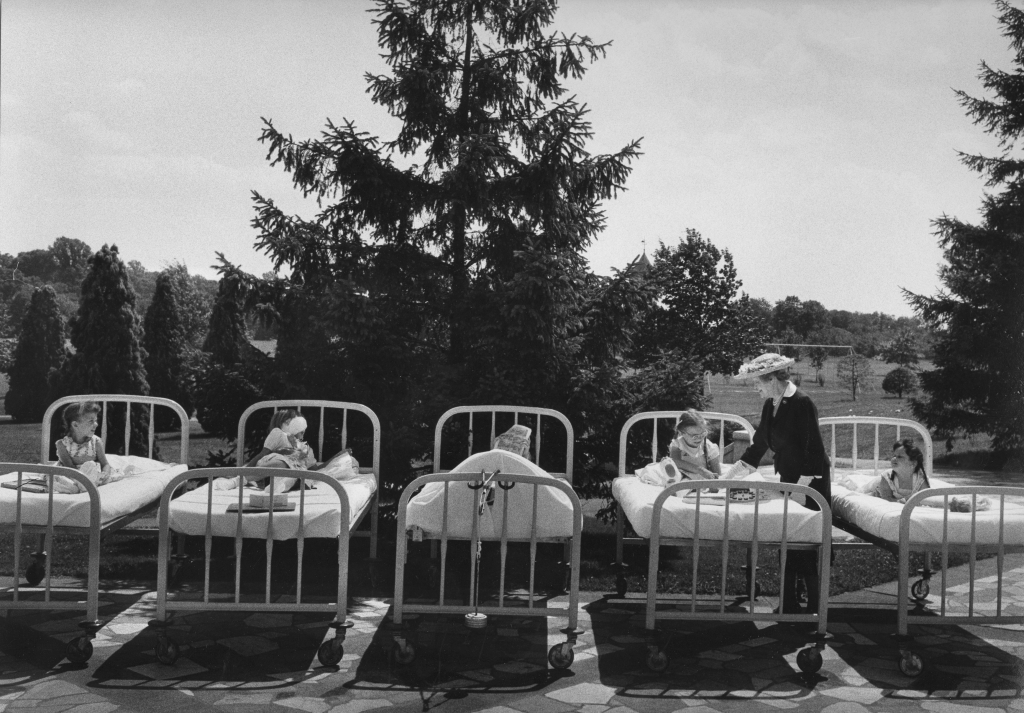
When I was hired to be a historic interpreter at Nemours Estate, a few months after jumping back across the pond, it just so happened that I was joining during a pivotal shift in leadership, philosophy, and culture. Gone now were the guided tours and restricted access policies that previously barred young children from visiting. The fence that separated the hospital and estate was no longer seen as a barrier. New leadership literally opened it up, installing a walking gate for patient and employee access. Our new Executive Director encouraged patient families to visit free of charge, calling the estate a place to engage with mind, body, and spirit.
Then, in 2018, I was hired to pilot a brand-new role: Community Education and Museum Coordinator. Since the estate now allowed children (finally!), we were in the unique position of creating an educational program from the ground up that engaged with a non-traditional audience of children and families in a meaningful way. It has been an amazing experience (with terrific support from Nemours Estate staff) to strategize and build a learning program from scratch. Here it was, fallen right into my lap: the chance to design a new, dynamic model of integration between heritage and health care. I felt like I had won the lottery.
Step 1: Choose a Primary Audience
Although we are beginning to host on-site learning programs for the general public, our physical location next to a pediatric hospital is practically begging us to think beyond the typical museum education model. So deciding that our primary learning audience would be the children served by Nemours/Alfred I. duPont Hospital for Children felt very natural. For one thing, schoolchildren in the area have plenty of traditional field trip options in the many historic homes, public gardens, and museums that surround Nemours Estate in the beautiful Brandywine Valley. The people who do not have as many options are the patients and families right next door to us.
One important factor that helps to make this choice possible is our uncommon funding structure. We are extremely fortunate to be able to rely on an endowment for our operations, which allows us to have a single-minded focus on mission- and vision-driven activities. While this special situation can be an amazing opportunity to do social good, it can also come with unexpected downsides. Part of the reason we are so late to the educational programming party in the first place is that Nemours Estate has never been challenged to look for programmatic funding or to “compete” for audiences.
Step 2: Take the Time to Learn the Needs of a Unique Audience
As you may imagine, bringing history and horticulture to the hospital and welcoming patient families to the estate requires a bit more preparation than a visit to your local library or school. As such, I have spent the better part of two years meeting hospital associates, learning what needs Nemours Estate may be able to assist with, and defining the scope of our programmatic work.
I work mostly with the hospital’s Department of Child Life, which is a fantastic place to start for any museum looking to get more involved with a pediatric hospital. Through this partnership, the team at Nemours Estate has started to bring patients everything from one-hundred-year-old gingerbread recipes to clocks and carrier pigeons, through a series of pilot programs that dovetail with hospital camps, holiday programming, and regular activities. In 2019 I established our first hospital-handling collection and the corresponding infection prevention protocols. I have also helped to create standalone programs for a Cerebral Palsy group, the Palliative Care Team, and the Nemours Child Development Center, among others.
The focus for this type of program development is on a carefully tailored experience that best meets the specific needs of the small group. We design on-site programming by looking through a lens of potential patient and sibling needs. While we welcome and encourage the general public to participate as well, we always incorporate accessibility and sensitivity to appointment times into planning.
Thanks to the tireless work of the Horticulture team at Nemours Estate, we have also found ways to bring horticulture and nature to patients and associates. Ken Darsney, Manager of Gardens and Grounds, also started his job in the midst of the administrative transition, and soon got to work collaborating with several hospital departments to create a vegetable container garden in the outpatient section of the hospital. Named “The Can Grow Garden,” it was part of an initiative that distributed over six thousand vegetable plants in 2019 to Nemours families to encourage healthy eating and growing produce at home. Thomas Ratay, Garden Specialist, helped me to bring kindergarteners from the Nemours Child Development Center and a cerebral palsy group to the woodlands and gardens to experience nearby nature. The horticultural team also helps me to film videos about the estate’s woodlands, ponds, and gardens, which bring the outdoors indoors for the children.
Step 3: Let Go of Your Idea of Standard Museum Practices. They Will Likely Need to Be Adjusted.
Prioritizing a non-traditional audience has tested many of our assumptions about museum practice. Shortly before the onset of COVID-19, for instance, we were able to install our first in-hospital exhibition, “Plates of the Estate,” just outside a twenty-four-bed unit. The cases embedded into the hallways were not museum-standard, not an ideal height, and were not temperature- or light-controlled in any way. We chose porcelain as a stable material to test conditions in the non-museum grade cases, but also because the duPonts enjoyed using colorful plates featuring animals—fun for all ages. Across the hospital’s atrium, we helped the Delaware Museum of Natural History install an equally exciting exhibit about rocks, minerals, and shells.
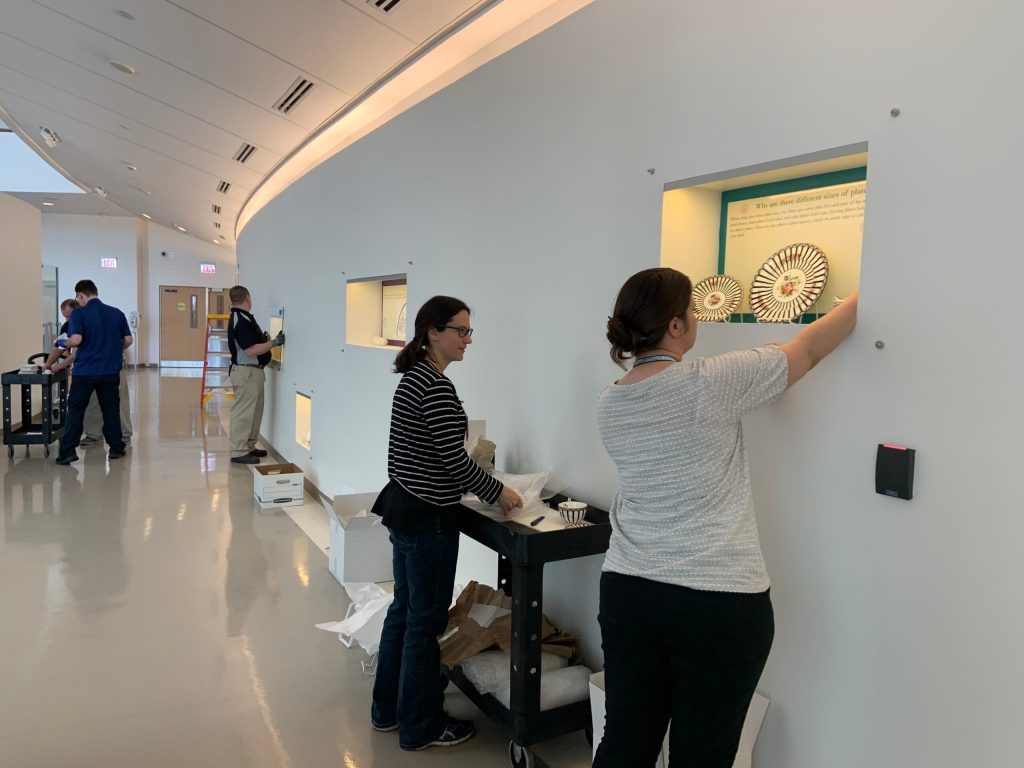
Another shift, especially this year, has been into virtual programming that is either streamed directly to a patient’s bedside screen or used by the Hospital School program for supplementary material. Virtual programming, familiar to all of us now, has always been important for this audience. Even before the COVID-19 pandemic, many inpatients were immunocompromised and unable to leave their rooms. Some children are not healthy enough for visitors or do not have the physical ability to hold objects at any time. While virtual learning does not allow for the same kind of tangible encounters with history that I have become passionate about in my academic and work experience, it is sometimes the only outlet they have.
Finally, as a museum professional, the staff and organizational structure at a hospital was not something I was at all familiar with. Working with departments such as Child Life, Volunteer Services, Telecom Support, Interior Design, and the ever-important Infection Prevention is a steep hill to climb, but the view from the top is worth it. I realize that if it is a learning curve for me, a Nemours Associate, it is likely that other museum professionals have run into obstacles climbing this hill as well. In addition to finding out who to talk to, there are many other nuances and best practices that require a degree of experience.
Step 4: Reach Out
Knowing there were other museums in the US with health care experience, I wanted to find them to compare notes. So, in July 2020 I posed a simple question on AAM’s Museum Junction forum: was there anyone out there who would like to discuss this topic? The flood of positive responses was beyond every expectation. Today, our “casual” discussion group has close to one hundred members and is still growing. We are in the process of splitting into working groups and discussing more focused topics, like working directly with patients, working with medical professionals and students, well-being & mindfulness, research, and horticultural projects. Group members range from seasoned researchers and experts to those who are simply interested in learning more. (If you would like to join these discussions, please send me an email!)
For me, the most beautiful thing about working with the hospital is access to a more diverse audience than would ever typically enter a museum. If we, as a field, can help our communities when they are truly in need of diversion, peace, self-exploration, or friendly faces, it only helps to chip away at the figurative wall that sometimes stands between us and non-museum-goers.
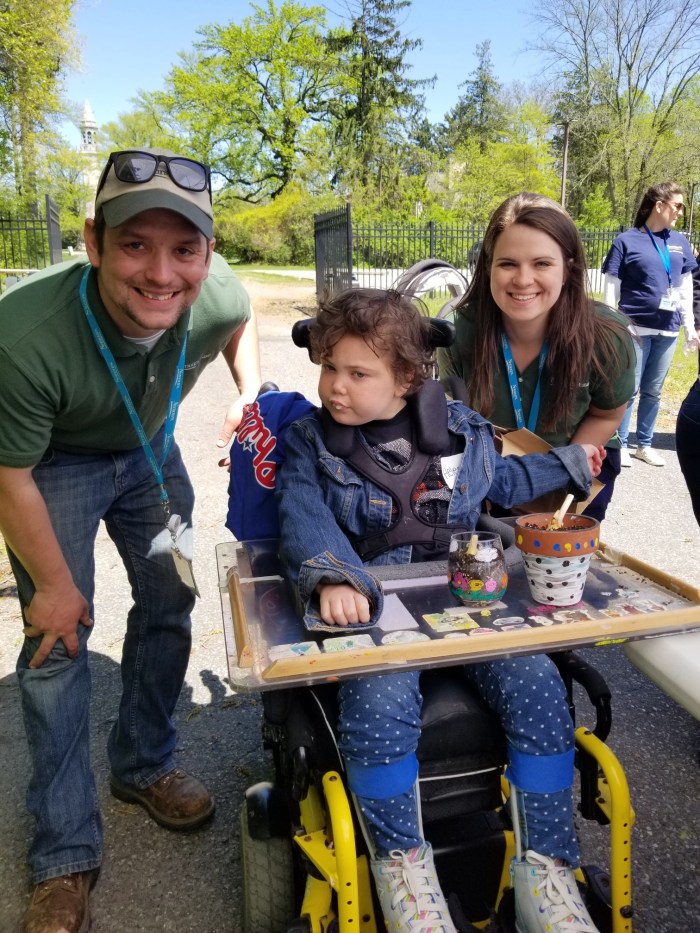
Final Thoughts
Hospital patients are often waiting. They may be waiting for an appointment, waiting for a procedure, or waiting to feel well enough to go home. My hope is to fill just a small fraction of that waiting time with something enjoyable, something that may lead to self-discovery, or family bonding time.
I focus on developing programs that encourage mindfulness, exposure to nature, and a discovery of personal interests. I want children to have immersive experiences that improve their mental and emotional well-being and expose them to interesting things in an informal environment. Them learning the “facts” is less important to me than the lesson that museums and gardens are places to renew and have fun.
When I was a child, one of my classmates was battling cancer. She would come to school when she could, and one day when she was in class, I noticed her beautiful, long fingernails. I complimented her, amazed that she could keep them for so long. Her response: “Growing them out is my hobby in the hospital. It gives me something to do.” What we have in museums and cultural organizations is worth sharing with people who need distraction the most. No matter the degree in which we engage with this audience, there will be sincere appreciation.
We all know that museums are for everyone. To really be for a hospital population, we need to meet them where they are, even if that means creating something new. This is a lesson that applies to all of the many communities we as museums serve—especially in times like these.
Editor’s Note: See AAM’s Museums, Health, and Wellness Compendium for more examples of museums contributing to health care.
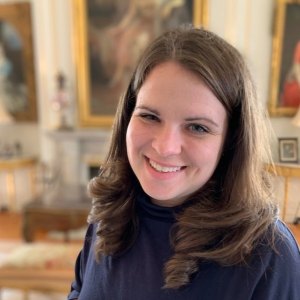








Excellent presentation of your program. I’m glad that your experience and drive found great partner institutions to develop the initiatives. I wish you much success and hope that I can do similar things in my museum.
Terrific article, Annie, that reminds me a museum is not for the person who funded it, it’s for those who visit it. Thank you for bringing creativity and empathy to your industry.